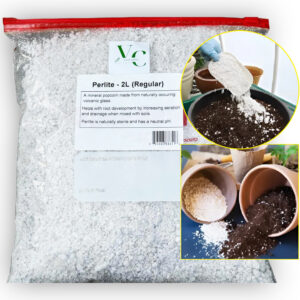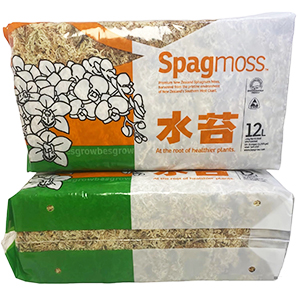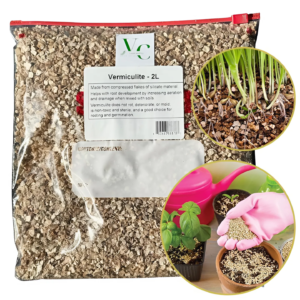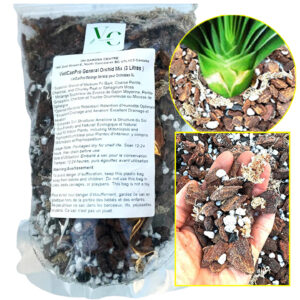Fine orchid media refers to a specialized growing medium used for cultivating orchids. Unlike regular potting soil, fine orchid media is designed to provide the right environment for orchid roots, which require good aeration and proper moisture retention without being waterlogged. The media typically contains a combination of materials that allow for sufficient drainage while still holding some moisture.
Common ingredients in fine orchid media include:
+ Fir bark: Helps with drainage and aeration while retaining some moisture.
+ Perlite: Enhances aeration and improves drainage.
+ Charcoal: Helps remove impurities and improve air circulation.
Benefits of Fine Orchid Media
| Improved Aeration | Orchids, particularly epiphytic species, thrive in environments where their roots are exposed to air. Fine orchid media allows for better air circulation around the roots, preventing them from suffocating, which can happen in dense, traditional potting soil. |
| Enhanced Drainage | Fine orchid media components like Fir Bark, Charcoal, and Coarse Perlite improve drainage, ensuring that excess water flows out of the pot quickly. Orchids are prone to root rot if left sitting in waterlogged soil, so a well-draining medium is essential. |
| Prevention of Root Rot | With its superior drainage and aeration, fine orchid media minimizes the risk of overwatering, which is the primary cause of root rot in orchids. The materials used help keep the roots healthy by maintaining the right moisture balance. |
| Support for Epiphytic Growth | Many orchids are epiphytes, meaning they grow on trees and rocks in their natural habitat. Fine orchid media mimics these conditions, offering a structure that supports root anchorage while allowing the roots to breathe and stay exposed to some airflow. |
| Longevity | Unlike regular potting soils that break down quickly, materials like Fir Bark, perlite last longer without compacting. This keeps the growing medium light and airy for an extended period, reducing the need for frequent repotting. |
| Improved Disease Resistance | Charcoal can help reduce the buildup of pathogens and harmful substances in the growing medium, promoting healthier root development and lowering the risk of diseases. |
How Fine Orchid Media is used
1. Repotting Orchids with Fine Orchid Media
1-1 Prepare the Orchid
- Gently remove the orchid from its current pot.
- Carefully loosen and remove old potting media from the roots.
- Trim away any dead or rotting roots using sterilized scissors.
1-2 Choose the Right Pot
Use a pot with plenty of drainage holes, as orchids need excellent drainage. Clear plastic pots are common for orchids because they allow you to monitor root health and water levels.
1-3 Prepare the Fine Orchid Media
Soak the fine orchid media in water for about 30 minutes before use. This ensures the medium holds enough moisture for the orchid when repotted.
1-4 Position the Orchid
- Place the orchid in the new pot, positioning it so that the base of the plant sits slightly above the rim of the pot.
- Fill the pot with fine orchid media around the roots. Gently shake or tap the pot to settle the medium around the roots, making sure the plant is stable but not packed too tightly.
2. Watering and Fertilizing Orchids in Fine Orchid Media
2-1 Water Frequency
Orchids in fine orchid media generally require less frequent watering compared to those in denser media. Depending on the media and environment, water once the top layer feels dry.
2-2 Watering Method
Water thoroughly, allowing the water to flow freely through the drainage holes, but avoid leaving the orchid in standing water.
2-3 Type of Fertilizer
Use a balanced orchid fertilizer (e.g., 20-20-20) or one designed specifically for orchids.
2-4 Fertilizing Schedule
Apply a diluted fertilizer solution (about half the recommended strength) every 2-4 weeks during the growing season, and reduce feeding during dormancy.
3. Monitoring and Maintenance
3-1 Repotting Frequency
Orchids should be repotted every 1-2 years or when the fine orchid media begins to break down or compact. Fresh media ensures that roots have access to air and are not waterlogged.
3-2 Root Health
Regularly check the health of the roots. Healthy orchid roots are firm and light green when hydrated. If roots begin to turn brown or mushy, this may indicate overwatering or decomposing media, signaling the need for repotting.
3-3 Humidity
Fine orchid media holds moisture but may dry out quickly in low-humidity environments. To maintain humidity, you can mist the media or place a humidity tray beneath the orchid pot.


















